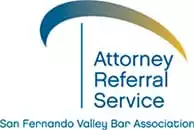Understanding California Employment Rights Post COVID-19
Is there anything worth knowing about California employment rights after the pandemic? Absolutely! Even as the world opens back up and gets back to normal, there is still important information to understand and keep in mind.
Read everything you need to know here.
Introduction
The COVID-19 pandemic has brought a lot of changes to our way of life — changes we never thought we would see. From forced shutdowns and mandated mask-wearing to required temperature checks upon entering a building. Many people lost their jobs while others were sent to work from home. Temporary orders were put in place as an attempt to protect employees and employers alike.
So now that vaccines are proving effective and herd immunity is slowly starting to take shape, we are trying to get back to where we were – with a new post-pandemic vision. Some orders have expired, others have been put in place. Knowing what our rights are and what the law says has become a bit skewed.
As we all begin to return to work, let’s take a look at 10 of the most important points to know and understand when it comes to California’s employment rights, post-COVID-19.
1. Employers Can Require Employees to Get Vaccinated
There has been a lot of debate about whether or not employers should be able to require employees to get vaccinated. According to California’s DFEH, employers can require employees to get the COVID-19 vaccine. However, they have to make reasonable accommodations for those with special needs or who have genuine religious beliefs. The employer cannot harass employees, either.
The EEOC suggests guidance that if there is no way to accommodate employees who will not get vaccinated, it may be lawful to terminate employment. Before taking this step, however, it may be a good idea to speak to an attorney.
2. Employers Cannot Require Vaccinated Employees to Wear a Mask
As of June 15, 2021, the California Department of Public Health updated guidelines regarding masks when it comes to those who are fully vaccinated. According to these guidelines, masks are not required except in places where everyone is to wear a mask, such as in schools, healthcare settings, correction facilities, homeless shelters, and on public transportation.
Employees who are fully vaccinated who have proof of their vaccinations are not required to wear a mask in the workplace unless otherwise stated. Employers may still request that all employees wear facial coverings, regardless of vaccinations.
3. Employers Can Require NON-Vaccinated Employees to Wear a Mask
In these same guidelines, the CDPH states that any employees who are not vaccinated must still wear facial coverings while indoors. However, in outdoor settings, face masks are not required of anyone.
Employers must provide these unvaccinated employees with approved respirators to be used while working indoors, in a vehicle, or close quarters with others.
4. Employers Can Require Employees to Undergo COVID-19 Testing Before Entering
Employers are allowed to test employees for COVID-19 before entering the workplace. The test results are to be kept confidential.
5. Employers Must Take Prompt Action in Response to COVID-19 Incidents
According to AB 685, “Employers must provide written notice to all employees who may have been exposed at a worksite.” This must take place within one business day of the employer being notified that someone tested positive (or has been placed in quarantine). This notice must state information concerning benefits as well as plans the employer intends to implement due to the illness. The name and other personal information of the person infected should not be stated in the notice.
6. Workers’ Compensation Will Cover COVID-19 Cases
Those employees who have exhausted their sick time and have been placed in quarantine due to a positive COVID-19 test may qualify for Workers’ Compensation benefits. Upon notification of the positive test, employers are to report detailed information to the administrator for Workers’ Compensation within 3 business days. It should be noted that the employee must have been at this office for the 14 days preceding the positive COVID-19 test. See SB 1159 for more information.
7. Cal/OSHA No Longer Requires Physical Distancing
Regardless of whether the employees and customers are vaccinated or not, any barriers and social distancing requirements are no longer necessary. However, employers can still implement these practices for further health and safety. And, they are required to continuously assess hazards and concerns while implementing a plan to reduce or prevent the spread of illness.
If a COVID-19 or other outbreak of 3 or more people occurs within a workplace, employers must assess whether or not distancing or the use of barriers will be beneficial. If more than 20 employees are impacted by the illness, action must be taken by employers to use barriers and physical distancing measures throughout the workplace.
8. Employers Must Reinstated All Accrued, Unused Paid Sick Leave to Re-Hired Furloughed Employees
Vacation time, paid time off, and paid sick leave are benefits that only accrue when employees work. That would mean that for those furloughed employees, there was no accrual when not working. However, if these employees are re-hired within 12 months of being let go, the California Healthy Workplaces, Healthy Families Act of 2014 requires that any accrued, unused paid sick leave needs to be reinstated upon rehire.
9. All Employers Must Update their IIPP to Cover COVID Precautions
Employers should encourage COVID-19 vaccination and offer training and implementation of good health and safety practices, such as cough/sneeze etiquette, hand hygiene, close contact with sick people, etc.
10. Employers Are No Longer Required to Give 60-Day Notice of Mass Layoff, Relocation, or Termination
The Executive Order issued in March 2020 states that employers just need to give as much notice as possible when an impending layoff, relocation, or termination is in the works. The notice to employees must be specific and guidance can be found with the California Labor and Workforce Development Agency (LWDA). This Executive Order is to remain in effect until the state of the emergency is lifted.
The Future Workplace
It took over a year of being in a pandemic to change the way we do business. Just as we are no longer the same people we were at the beginning of 2020, neither are some of the laws employers must follow.
If you are unsure of how to proceed during certain situations or circumstances, hire a lawyer. The more carefully you maneuver through these new, unchartered waters, the safer you will be.
Are you in search for a certified attorney to represent you?
Let us help you find one today!


